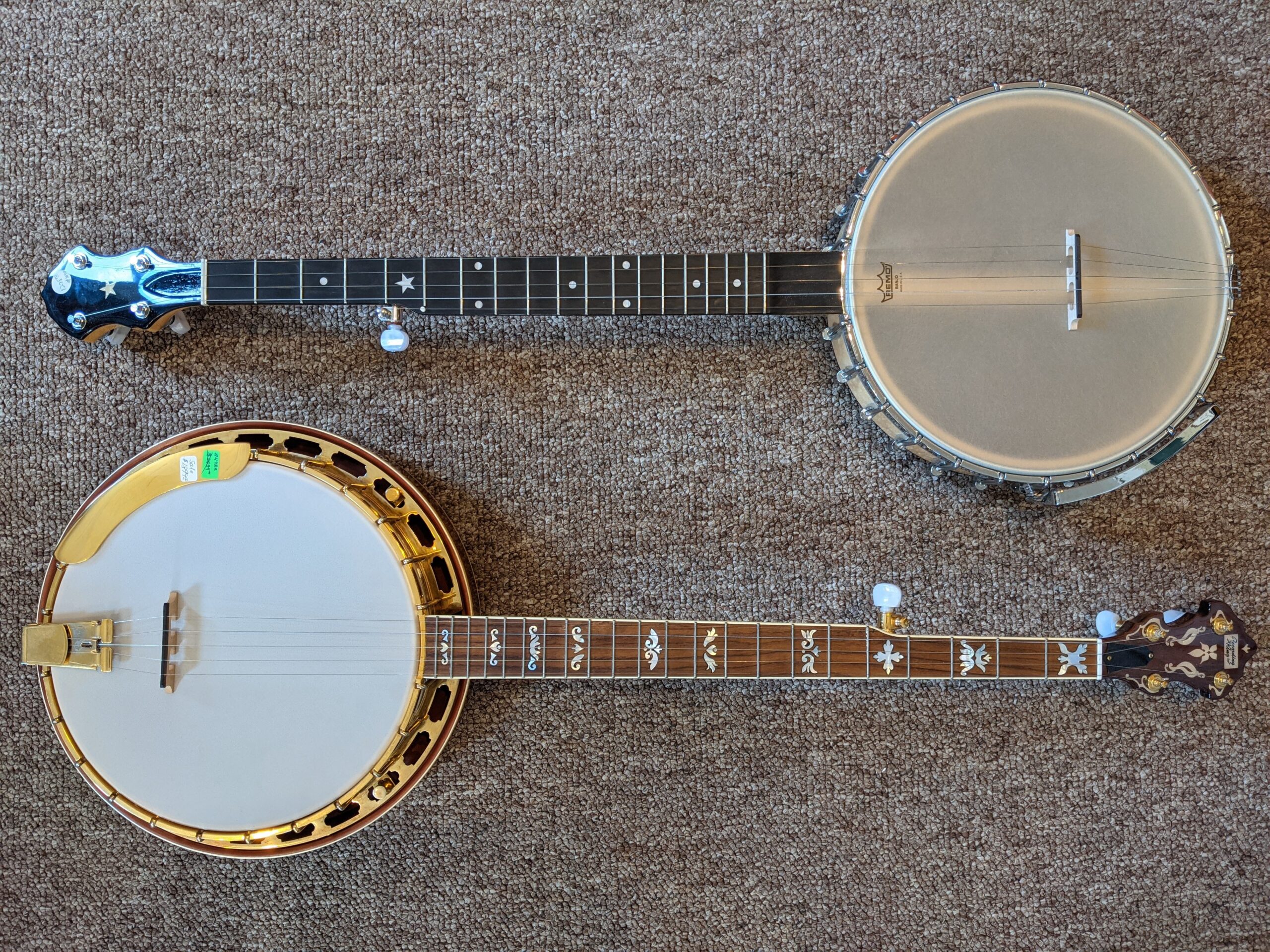
Banjos at Vintage Music
The instrument that became the banjo was first brought to the Americas by enslaved Africans. In the Caribbean, they adapted their homeland’s instruments—the ancestors of present-day West African folk lutes such as the akonting, xalam, and ngoni—using available materials, such as gourds. Very few people could bring instruments with them, so most who could not relied on their memory to build instruments. The early gourd banjo—constructed with a gourd body, hide stretched over the head, fretless neck, floating bridge, and a short thumb string—was a uniquely Afro-Caribbean instrument that was brought into North America by enslaved Africans towards the late eighteenth century. Some remaining examples of early gourd banjos from that time period include the creole bania from Suriname, which can be found along the northern coast of South America, and the banza from Haiti (bania, banza—can you see how the name ‘banjo’ is related?). Banjos have continued to evolve with the replacement of the gourd body with a wooden rim and metal rings, the replacement of the hide head with a plastic or synthetic head, metal frets, and the addition of a resonator, depending on the style of music (bluegrass tends to feature resonator banjos for louder volume, while old-time tends to use open-back banjos without resonators).

Earliest known recorded image of banjo (second stringed instrument in front of the African harp for size comparison)
by Dutch naturalist Hans Sloane
(Citation: Plate III from Hans Sloane, A Voyage to the Islands Madera, Barbados, Nieves, S. Christophers and Jamaica, vol. 1 (London: B.M., 1707))

Top: open-back banjo, bottom: resonator banjo

Left: open-back banjo, right: resonator banjo
Banjo playing styles can also be traced following the same global paths along which the instruments have developed. The clawhammer playing style (the “bum-ditty” sound of the index finger pushing down on four strings and the thumb hitting the fifth string) stems from the same down-stroke method used to play West African instruments such as the akonting. Another method of playing banjo is the fingerpicking method (the index and middle finger plucks strings inward), which developed into the three-finger picking style prominent in bluegrass. Many other styles of playing banjo have developed over the years in different contexts, reflecting the creativity of the people who have learned to play it.
Ekona Diatta plays “Gambia” on the akonting (ekonting) June 2007
Athens, GA-based musician & artist Art Rosenbaum plays clawhammer banjo on Little Maggie
Pick & Bow banjo instructor Geoff Hohwald plays three-finger style on Gold Rush
Listening
JOKE
Q: What’s the difference between a banjo and an onion?
.
.
.
.
.
.
.
.
A: No one cries when you cut up a banjo.
REFERENCES
“Banjo.” Blue Ridge Music Trails. Accessed January 25, 2021. https://www.blueridgemusicnc.com/listen-and-learn/instruments/banjo.
Carlin, Bob. The Birth of the Banjo: Joel Walker Sweeney and Early Minstrelsy. Jefferson, NC: McFarland, 2007.
Epstein, Dena J. “The Folk Banjo: A Documentary History.” Ethnomusicology 19, no. 3 (1975): 347-71. Accessed January 25, 2021. doi:10.2307/850790.
Kristina Gaddy, September 20. “Instrument Interview: The Creole Bania, the Oldest Existing Banjo.” Birthplace of Country Music, September 19, 2018. https://www.birthplaceofcountrymusic.org/instrument-interview-the-creole-bania-the-oldest-existing-banjo/.
Winans, Robert B., ed. Banjo Roots and Branches. Urbana Ill.: University of Illinois Press, 2018.
